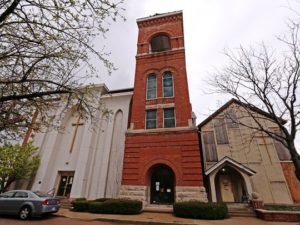
The Indianapolis Star
The oldest Black church in Indianapolis has been sold to make way for two new hotels this summer. The demise of Bethel African Methodist Episcopal Church marks the end of Indiana Avenue, a historic area in the city touted as a Black culture mecca.
Located at 414 W. Vermont St. in downtown Indianapolis, the 150-member congregation will have to leave the premises for good come August. According to The Indianapolis Star, SUN Development and Management Corp. is buying the property to build the hotels. The contract for the development stipulates that as much of the original structure as possible will be preserved.
Chairman of SUN Bharat Patel said the firm has not made a decision on what hotel company will be built in the area, but a replica of Bethel AME will be built on the current church parking lot.
An effort to raise $2 million for church repairs, including a new roof and electrical system, failed. Bethel AME’s pastor, Rev. Lewis Parham, said that after being told to expect $300,000 from a Texas church, the money never came. Only $11,000 was raised through member donations along with a $100 gift card from an Indianapolis resident. Parham didn’t reveal how much SUN paid the church for the property, but there had been previous offers.
“Considering the dollars that were involved, plus some of the other aspects of the contract, we thought his offer was the best,” Parham said to the IndyStar. “His offer was one that would not call for demolition of this building.”
Bethel AME Church has a rich history in the city. According to the National Park Service, it was founded by William Paul Quinn and Augustus Turner in 1836. Originally known as Indianapolis Station, the church was eventually used to house enslaved people escaping along the Underground Railroad. After it was burned down by slavery supporters in 1862, the congregation raised money for its revival in 1867. Bethel AME has stood in its current location for nearly 150 years.

